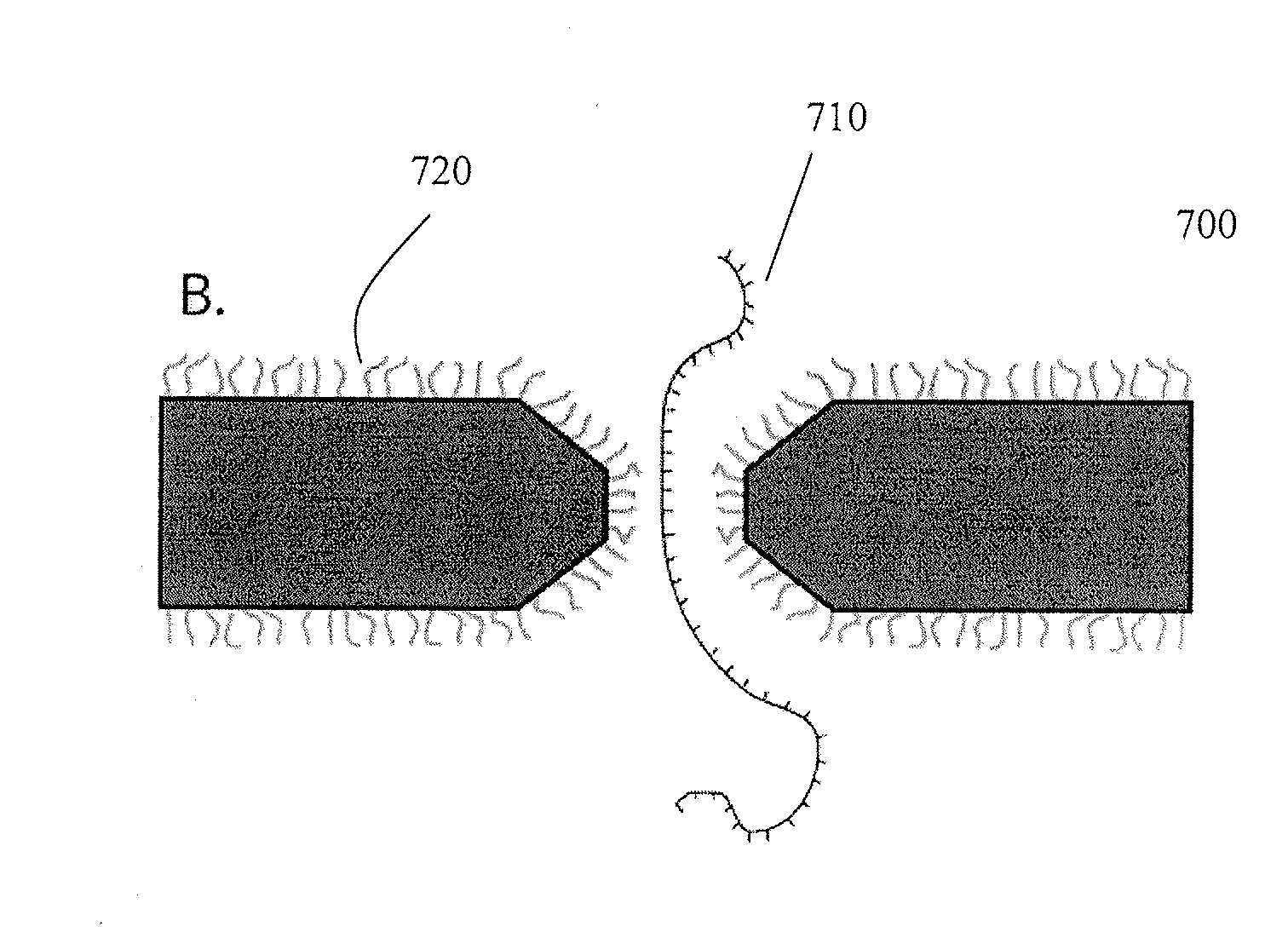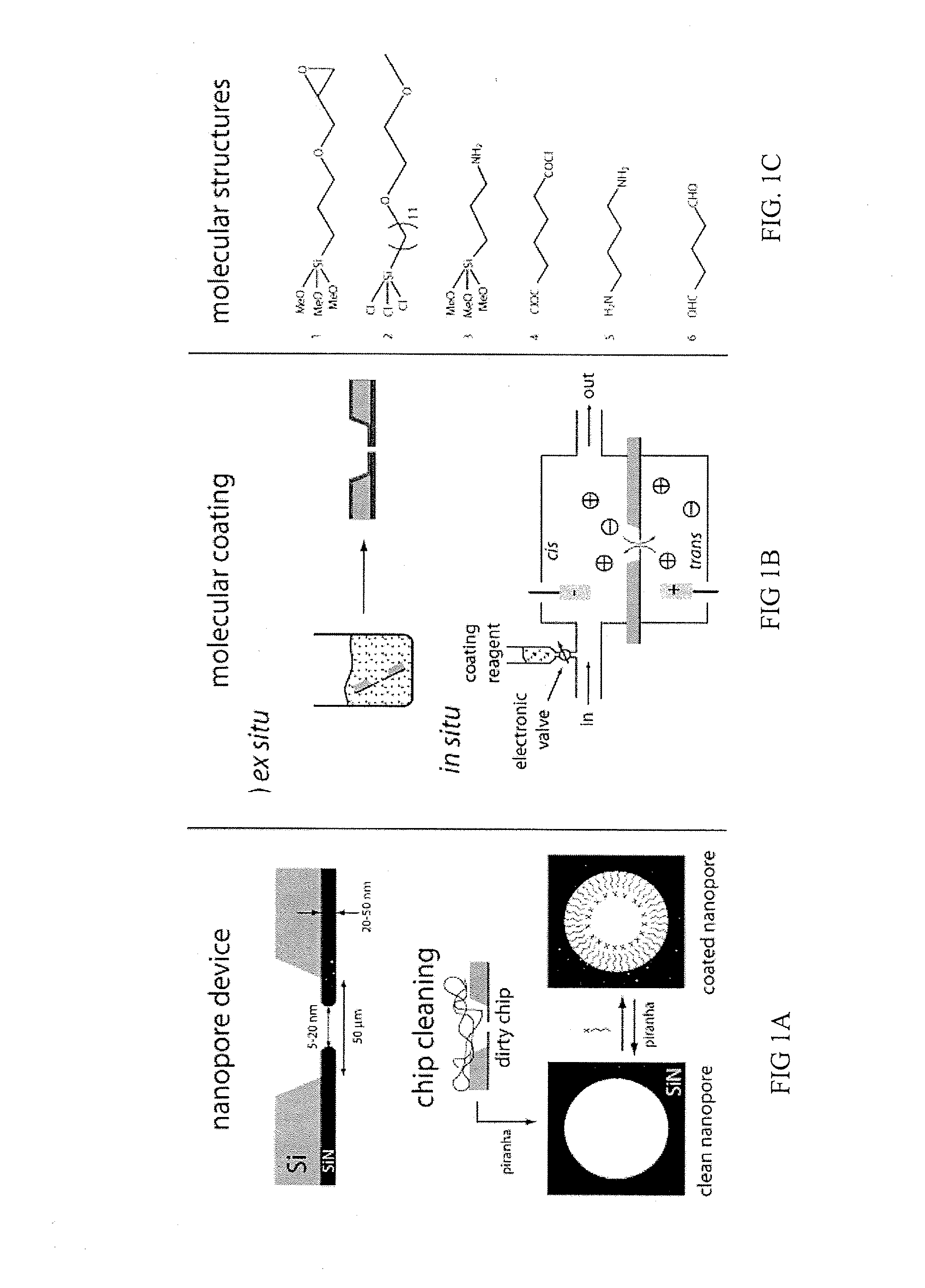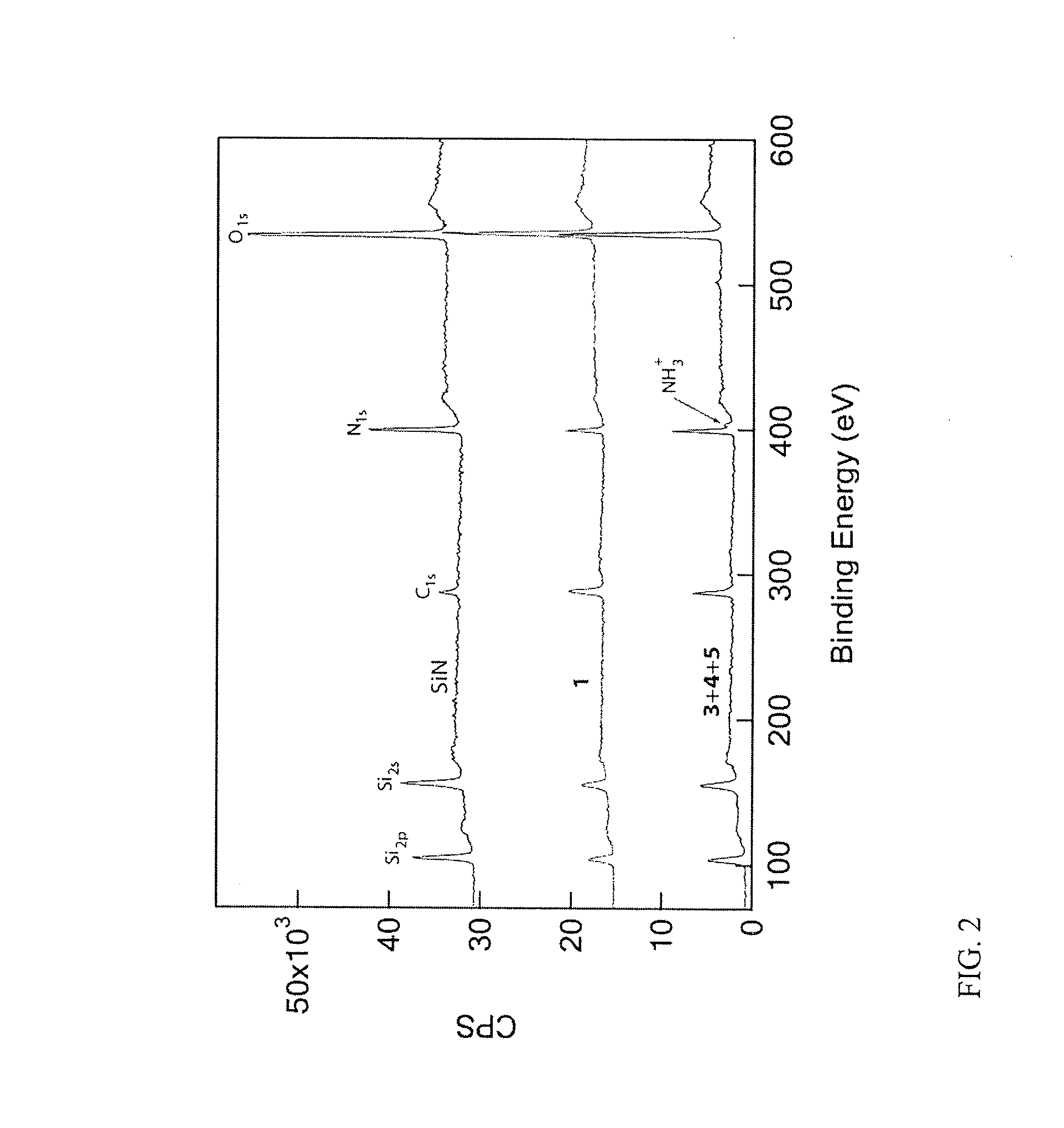Chemical functionalization of solid-state nanopores and nanopore arrays and applications thereof
a technology of solid-state nanopores and arrays, which is applied in the direction of chemiluminescene/bioluminescence, synthetic resin layered products, natural mineral layered products, etc., can solve the problems of inability to selectively detect desired molecules or environmental alterations, and the control of nanopore surface characteristics is an obstacle to the use of nanopores in detection applications, etc., to achieve slow dna translocation and prevent sticking
- Summary
- Abstract
- Description
- Claims
- Application Information
AI Technical Summary
Benefits of technology
Problems solved by technology
Method used
Image
Examples
example # 1
Example #1
Unfolded DNA Translocation Governed by Interactions with Solid State Nanopores
[0166]Experimentation has verified voltage-driven translocation dynamics of individual DNA molecules through solid-state nanopores. Nanopores with diameters slightly larger than the DNA cross-section (approximately 2.2 nm) may be used to reduce translocation times. In certain embodiments, the translocation times of DNA molecules are slowed by approximately one to two orders of magnitude. Experimental evidence reveals that both temperature and the nanopore size strongly affect the dynamics. While not wishing to be bound by theory, the inventors believe this effect implies that interactions between DNA and the membrane are the rate-limiting step for translocation, as opposed to viscous drag. For DNA longer than ˜10 Kuhn lengths, a crossover in the scaling of the translocation dynamics to a slow regime is observed. Furthermore, experimental results suggest the DNA current blockage is length dependen...
example # 2
Example #2
Articulating Solid-State Nanopores with Proteins
[0192]Various solid-state nanopore coating schemes, used in order to embed single α-hemolysin (α-HL) channels inside engineered solid-state nanopores, have been investigated. α-hemolysin is well-known in the art as a β-pore forming dimorphic proteins that exist as soluble monomers and then assembles with other monomers to form multimeric assemblies that constitute the pore. Seven α-Hemolysin monomers come together to create this pore. Selected nanopore coating schemes can be used to affix α-hemolysin monomers on the surface of the aperture comprising the nanopore.
[0193]FIG. 16 illustrates schematic representations of a silicon nitride (SiN) solid-state nanopore coated with a self-assembled monolayer, for attachment of a α-Hemolysin channel, according to one embodiment of the invention. FIG. 16 provides a scheme of a silicon nitride (SiN) solid-state nanopore (gray) coated with a self-assembled monolayer (dark), for attachment...
PUM
| Property | Measurement | Unit |
|---|---|---|
| thickness | aaaaa | aaaaa |
| thickness | aaaaa | aaaaa |
| thickness | aaaaa | aaaaa |
Abstract
Description
Claims
Application Information
 Login to View More
Login to View More - R&D
- Intellectual Property
- Life Sciences
- Materials
- Tech Scout
- Unparalleled Data Quality
- Higher Quality Content
- 60% Fewer Hallucinations
Browse by: Latest US Patents, China's latest patents, Technical Efficacy Thesaurus, Application Domain, Technology Topic, Popular Technical Reports.
© 2025 PatSnap. All rights reserved.Legal|Privacy policy|Modern Slavery Act Transparency Statement|Sitemap|About US| Contact US: help@patsnap.com



